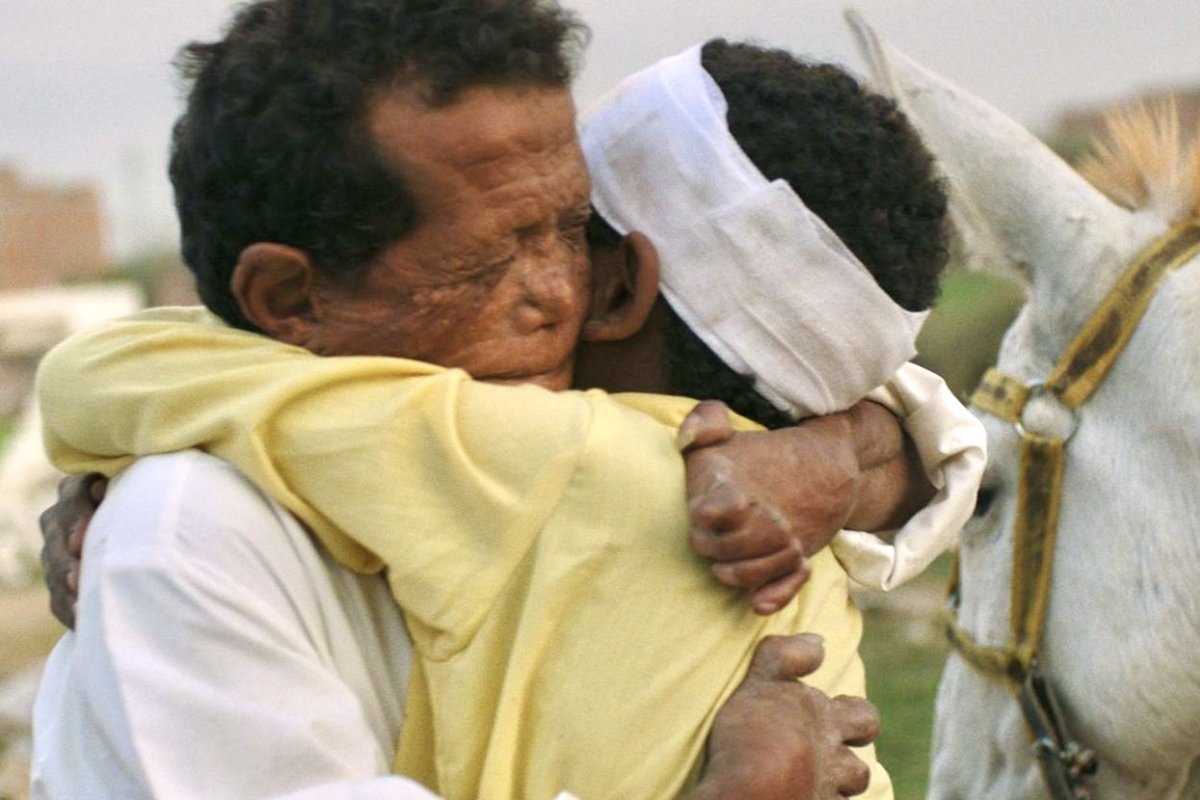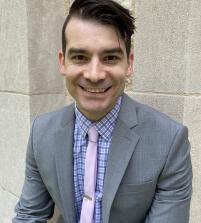
Judging Illness and Living Like Kings in Yomeddine
Religion and the interpretation of illness in the critically acclaimed Egyptian film Yomeddine (2018)
“Run from a leper as you would run from a lion.”
-Al-Bukhārī, as-Sahīh (Būlāq ed.), 8:433
Though often unsure of how to interpret it, characters frequently recite this well-known ḥadīth of the Prophet Muhammad over the course of Yomeddine, a 2018 Egyptian film and the first feature-length project by writer and director Abu Bakr Shawky. The film was nominated for the Palme d’Or at the 2018 Cannes Film Festival, where it also won the François Chalais Prize (awarded to films that honor the values of life affirmation and journalism) but has only recently achieved wider American distribution. Translating as “Day of Judgment,” Yomeddine is a touching road trip movie that provides a thoughtful commentary upon appearances and the ability to see beyond platitudes and prejudices. Throughout Yomeddine, Shawky invokes a consistent sense of a judgment day; a point when outward appearances are irrelevant in light of inner character and integrity. It also seems that Shawky has in mind a Christian gospel of inverted structures in which the last, such as our protagonists Beshay and Obama, will be first. More importantly, the film dramatically illustrates the phenomenon whereby illness is subjected to interpretation and how religion is often entangled in that process of fashioning meaning.
The film introduces us to its main character, Beshay, by directing our gaze to his gnarled and scarred hands as he prospects for treasure in “Garbage Mountain” on the periphery of the desert. Beshay has lived his entire life with leprosy, or Hansen’s disease, and though he is cured, the disease has left his hands and face visibly scarred and disabled. With this opening scene, Shawky lays bare all the viewer needs to know about his film. Beshay, portrayed by first-time actor Rady Gamal—himself a patient with leprosy and life-long resident of the leprosy community that was the subject of Shawky’s 2009 documentary short “The Colony”—exudes a warm and mischievous charisma that dramatically eclipses his scars. Those scars are a consistent focus of Shawky’s camera, framed with an authenticity that deliberately eschews sentimentality and objectification.
Yomeddine capitalizes upon the historically fraught interpretation of leprosy in both Islam and Christianity, two religions that feature prominently in the film. Though the aforementioned ḥadīth is repeatedly featured in the film, this seeming invocation of fear and fault in a person with leprosy would contrast with the Prophet’s statement (24:61) in the Qur’ān that, “There is no fault in the blind, and there is no fault in the lame, and there is no fault in the sick.” “Leprosy” is also featured in Leviticus 13-14 and its call for the ostracization of those with the disease; Numbers, 2 Kings, and 2 Chronicles similarly contain passages where leprosy is a divine punishment. This contrasts with a medieval tradition that understood Job as suffering from the disease righteously (all while sitting upon a garbage heap much as Beshay!). Moreover, Christian readers saw this tradition further complicated by healing episodes in the gospels and most pointedly, the gospel story of Lazarus and the Rich Man (Luke 16:19-31). Lazarus, a destitute beggar frequently interpreted to suffer from leprosy, languishes outside the house of a rich man only to see—in the afterlife—the reversal of their statuses with Lazarus elevated to the company of Abraham. The film deftly features these contested understandings of leprosy—implicitly commenting on how unstable such judgments about the disease are—while heralding the affirmation and elevation of the marginalized after the Day of Judgment.
Yomeddine depicts how every day Beshay rides his cart with his faithful donkey, Harby, between the garbage dump and the “leper colony” where he has lived since being abandoned there by his father. Although happy and content at the colony where he addresses his friends with the wryly affectionate, “Greetings, sick people!” Beshay’s life is upended when his mentally ill wife and fellow leprosy patient, Ireny, dies. Subsequently, Beshay decides to journey to Qena to find his birth family—and answers. He is soon accompanied on this road trip by his loyal young friend Obama (“like the man on TV”), a Nubian orphan and fellow outcast. Predictably, on the road our jocular pair encounters no shortage of fear and hostility directed towards Beshay’s appearance. But a highlight of the film is undoubtedly when the destitute Beshay and Obama are hosted and fed by a trio of self-described beggars and “outcasts” including Hamed, a legless ex-truck driver whose unflappable confidence and candid humor is positively addicting.
As with his treatment of leprosy, the director Shawky succeeds in treating religion with authenticity and playfulness. In one of the most comical moments of the film, Beshay, after having been jailed next to an alarmed Salafi Muslim man, escapes and the sight of the odd couple shackled together and fleeing through the busy town streets is truly charming. Reunited with the other man’s Muslim brethren as they remove the shackles, Beshay introduces himself as “Muhammad” to the knowing amusement of his audience. Likewise, when the aforementioned ḥadīth of the Prophet is recited, Beshay subverts the saying with a challenge: “So lepers are like lions?” In similar fashion, an especially touching scene features our two leads, having arrived at last in Qena, in a mosque as Obama affectionately guides Beshay through the Salāt prayers, even though Beshay is himself a Coptic Christian (a point on which Obama teases him). Shawky should be applauded for his decision to eschew cheap religious caricatures: for instance, the imam simply accepts Beshay’s excuse of “allergies” for why he’s praying at the back. Aside from religion’s role in interpreting illness, scholars should note Yomeddine’s point that Beshay’s “leprosy” affords him a certain authority in both challenging said interpretations and seamlessly moving between ritual domains.
With the film’s title, it should also be no surprise that the religious concept of the “Day of Judgment” is a frequent topic of conversation. This specific topic first occurs after the death of Beshay’s wife, when the colony’s administrator confidently assures him that the mentally infirm bypass judgment and go straight to heaven. Beshay later echoes this sentiment after the death of his donkey Harby, comforting Obama that animals are likewise exempt from judgment in the afterlife. Judgment is most pointedly invoked when Beshay is finally reunited with the father who had abandoned him all those years ago (though I won’t spoil the ending). But a clear, spoiler-free instance of this theme occurs as Beshay and Obama “feast” with the disabled trio of beggars; one of the beggars voices the triumphal declaration that “We live like kings”—a sly reference, I would argue, to Lazarus. Yomeddine then yearns for an eschaton in which the marginalized are given their due and outward statuses are no longer relevant. The mentally ill and even lowly donkeys eschew divine judgment and this privilege is arguably afforded to the equally marginalized disabled, leprous, and orphaned characters—a point that is surely underlined when one of the hospitable beggars assures Beshay and Obama, “We’ll meet again.”
Suggested Reading
Christine M. Boeckl, Images of Leprosy: Disease, Religion, and Politics in European Art (Kirksville, MO: Truman State University Press, 2011).
Michael W. Dols, “Leprosy in Medieval Arabic Medicine,” Journal of the History of Medicine and Allied Sciences, vol. 34, no. 3 (July 1979): 314-333.
Timothy S. Miller and John W. Nesbitt, Walking Corpses: Leprosy in Byzantium and the Medieval West (Ithaca: Cornell University Press, 2014).
Sightings is edited by Joel Brown, a PhD Candidate in Religions in the Americas at the Divinity School, with assistance from Nathan Hardy, a PhD Candidate in the History of Christianity at the Divinity School. Sign up here to receive Sightings via email. You can also follow us on Facebook and Twitter. The views and opinions expressed in this article are those of the author and do not necessarily reflect the position of the Marty Center or its editors.


